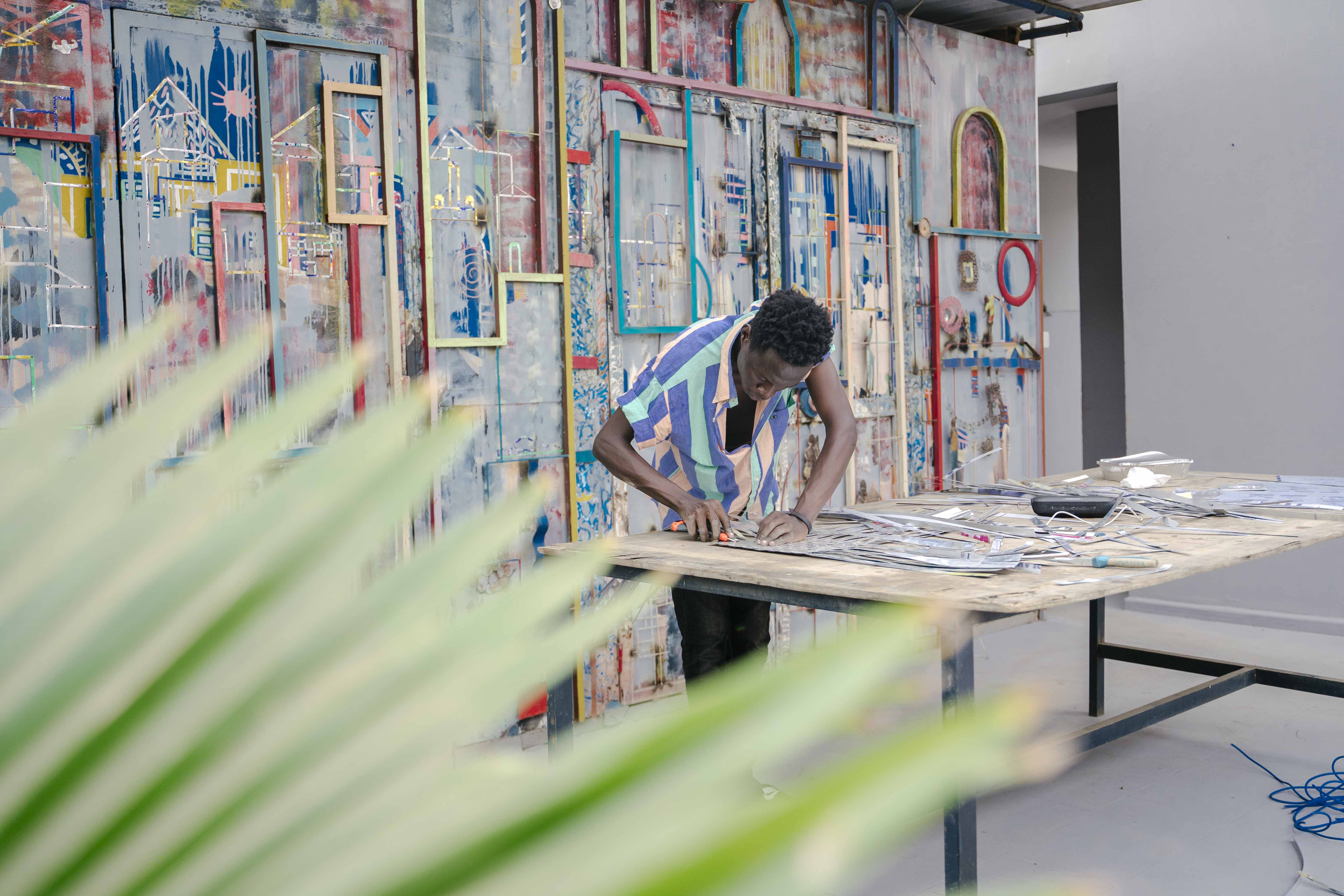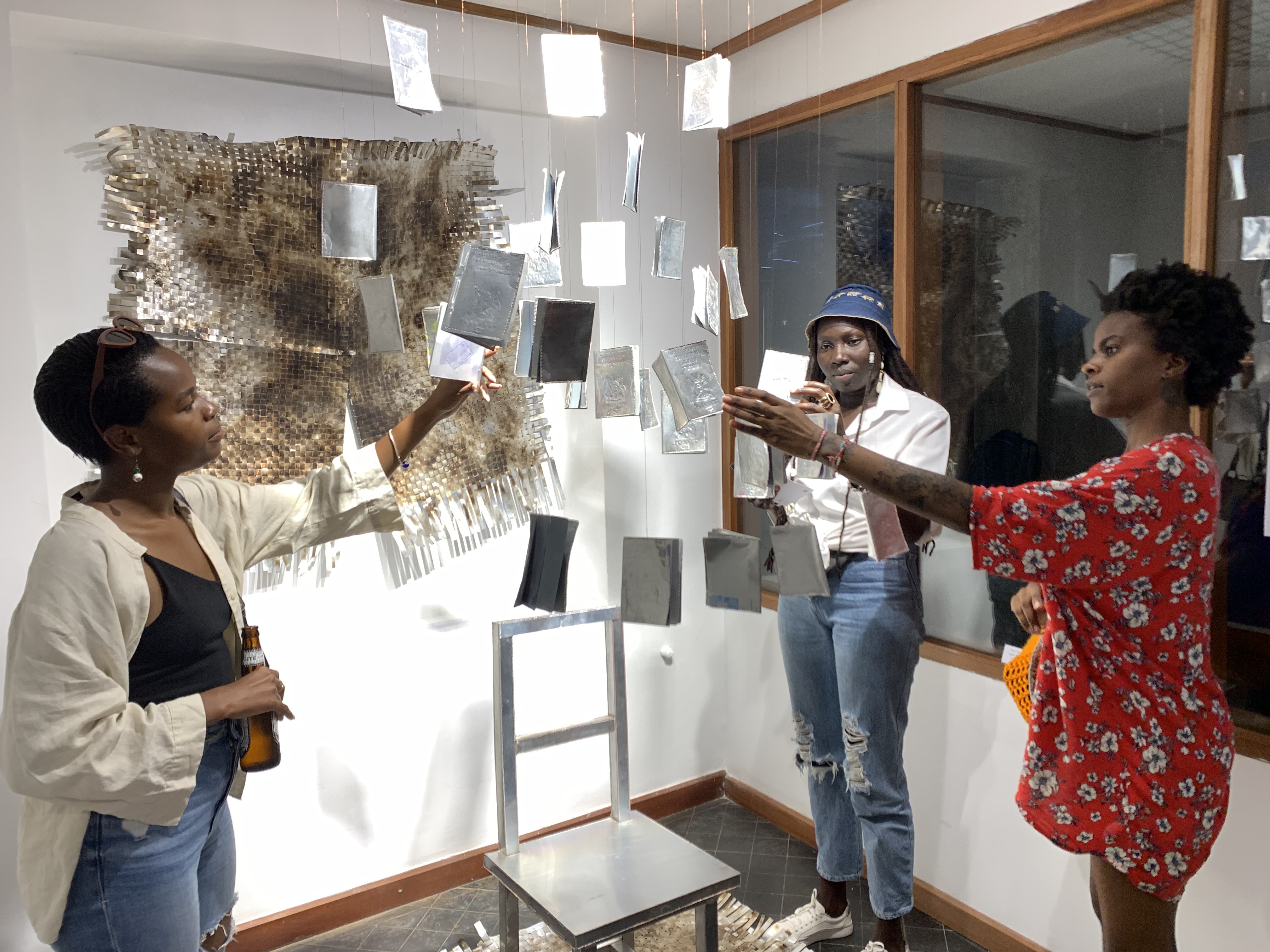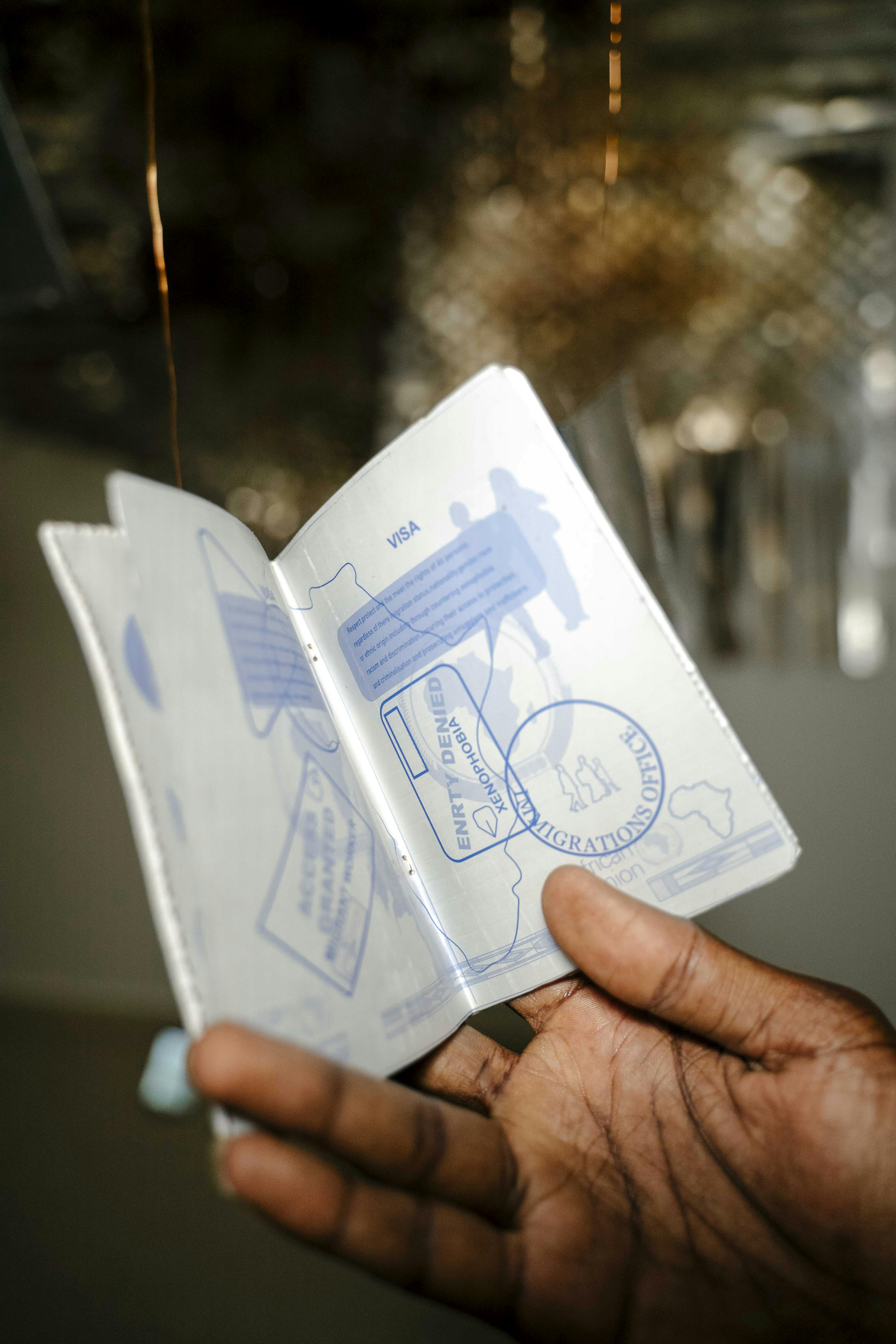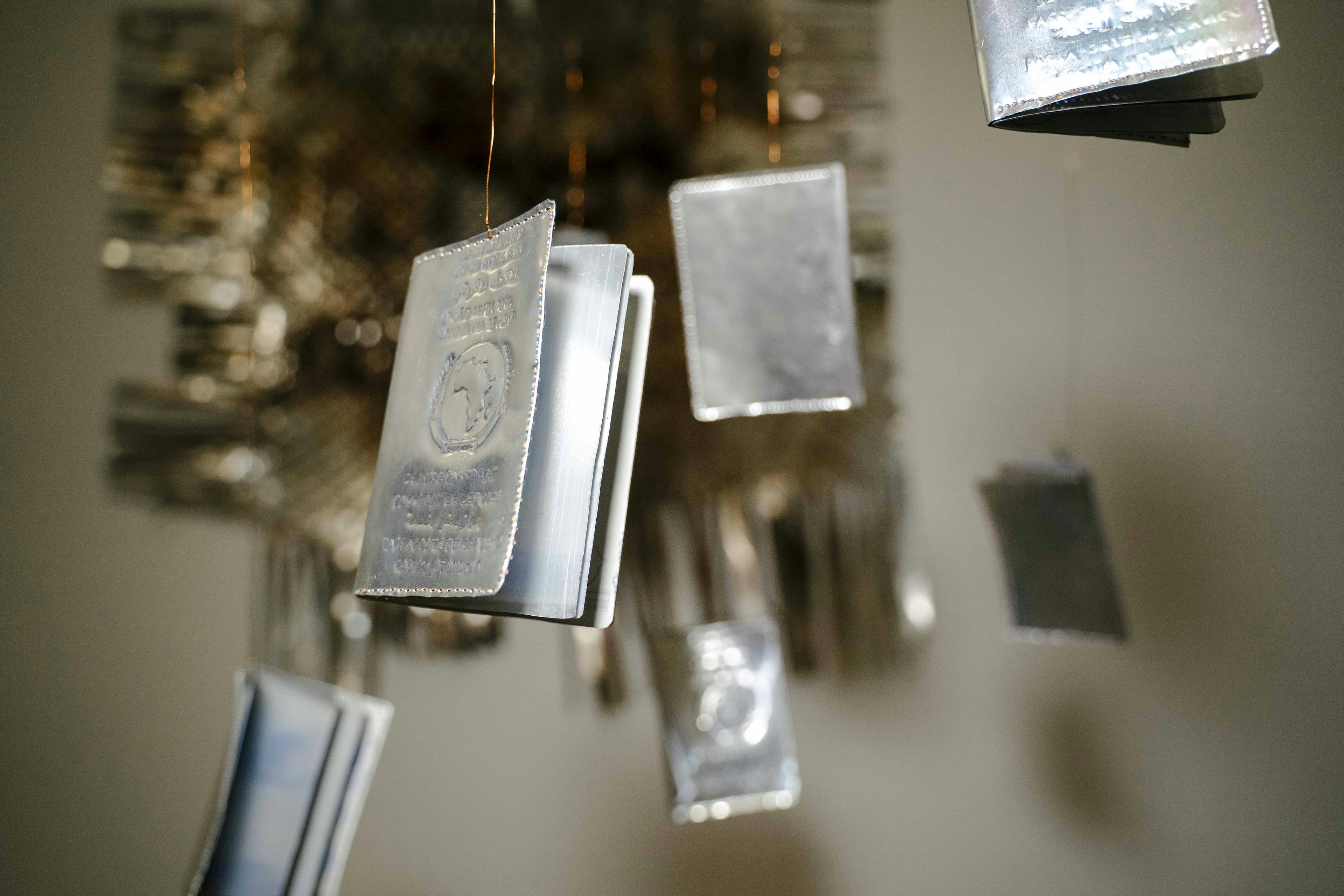
Ugandan multidisciplinary artist Odur Ronald, known for his aluminum printing plates explores ideas of free movement, migration, access, belonging and personhood. Through techniques such as denting, burning, layering, stitching, painting, and weaving, he transforms this commonplace material into detailed sculptures and installations, achieving texture, colour, shape and character.
Odur’s latest exhibition, ‘The Republic of This and That,’ opened at the Afropocene Capsule Gallery on September 11, 2023. Within this exhibition, Odur unveils a compelling artistic exploration and commentary on the concepts of unrestricted and restricted mobility, belonging, and personal identity.
In this exhibition, Odur invites his viewers to contemplate the complexities of free movement, belonging and personhood through the motif of the passport. He transforms his commonplace and often discarded material into highly stylised sculptural reconstructions of everyday objects that capture the current moment, and seemingly freeze time. The Republic of This and That provides a starting point for a critical reassessment of the way contemporary society is structured, making us pause and examine more closely.
As an art enthusiast who enjoys researching artist working with found materials, I find Odur’s work breathtaking. His brilliance not only lies in his adept exploration with aluminum but also his thoughtful engagement with contemporary issues we can relate to.
The Republic of This and That
In the current historical moment, the issues that define our world revolve around a critical reevaluation of the structure of modern society and its inhabitants. At the forefront of this discussion is the concept of passports, which serve as the primary means through which international borders are enforced, and individuals are either included or excluded from crossing these boundaries. It is fascinating to note that the passport system, which holds immense power over the movement of people, was originally introduced as a temporary postwar measure a mere one hundred years ago. The initial intention was for it to be temporary, yet it was inexplicably never revoked and has since become deeply entrenched in our global society.
Throughout the twentieth century, the rigidity of the passport system has fluctuated, but in recent times, we have witnessed a tightening and heightened security of borders. Passports have evolved from being a mere travel document to becoming an indispensable feature of international travel. They not only verify one’s identity but also determine the level of freedom a person has in traversing geographical boundaries.

In a world where global mobility is both desired and necessary for various reasons, the role of passports in influencing the opportunities afforded to individuals cannot be overstated. However, beyond the issue of identification lies a series of complex and interconnected conflicts revolving around notions of identity, belongingness, and the very structure of borders themselves. These conflicts have pushed us to ponder not only who people are in the present but also delve into their pasts and contemplate their futures – the question of identity.
The Republic of This and That is an ongoing body of work that explores and comments on the idea of free movement, belonging, and personhood using recreated aluminum printing plate passports finely stitched together with copper wire.
By allocating conceptually different passports and their republics, Republic of This and that conceptually captures the challenges, obstacles, and limitations imposed by borders and boundaries, represented by the printed visa stamps on the passport pages. This exploration has raised various questions and findings, leading to further examination of identity, belongingness, movement, and access by exploring how individual nuances and autonomy in identity can serve as connecting points within larger societal contexts.
SP Residency & 32 Commission

Odur began using the aluminum plates to materialize his ideas during a Silhouette residency at Afriart Gallery in 2020 which culminated in the first passport ‘The Republic of Contemporary Art’. He returned to this format for the installation titled ‘Ekisaakaate’ (2023), which was commissioned by Prince Claus Fund for the occasion of the phase 1 opening of 32 Degrees East Arts Trust. The installation, consisted of 50 aluminium passport sculptures suspended from door frames, and explored themes of boundaries and borders.
AU 20 Residency

The African Union residency (AU20) in collaboration with UNDP Africa, and implemented by Africa No Filter, brought 10 artists from across the continent to Dakar to create works under the theme Our Africa, Our Future. The aim of the residency was to support works which shifted narratives and highlight the valuable contributions of African artists in sharing African stories. The completed works were also exhibited at the AU headquarters in Addis Ababa Ethiopia at the margins of the AU summit 2023.
14th Kaunas Biennial

As part of the 14th Kaunas Biennial, under the theme of Long-distance Friendships Odur’s passports were presented at the Kaunas Central Post Office by curator Alicia Knock. The defunct post office was reanimated by the exhibition as a space to reflect on exchange and togetherness, transnational solidarity, and friendship, and included works and correspondence by African and Eastern European artists. Odur’s contribution highlighted the challenges of visa policies and lack of mobility which affects artists from both regions.
About Odur Ronald
Odur Ronald is a Ugandan multidisciplinary artist based in Kampala. He studied Interior Design at Kyambogo University, Uganda.
His practice involves large-scale installations, sculptures, paintings, and performances, to not only explore the capabilities of the aluminium he works with, but also the complexities of the socio-political issues he encounters. He has exhibited in numerous exhibitions, both at home and abroad including The Kampala Art Biennale (2018),(Im)perfections, Afriart Gallery (2020), KLA ART Festival(2021) and African Union Headquarters, Addis Ababa 2023. He won the Mukumbya Musoke art prize in 2020, was shortlisted for the Alpine fellowship award (UK) the same year, and won a Prince Claus Seed Award in 2021.

